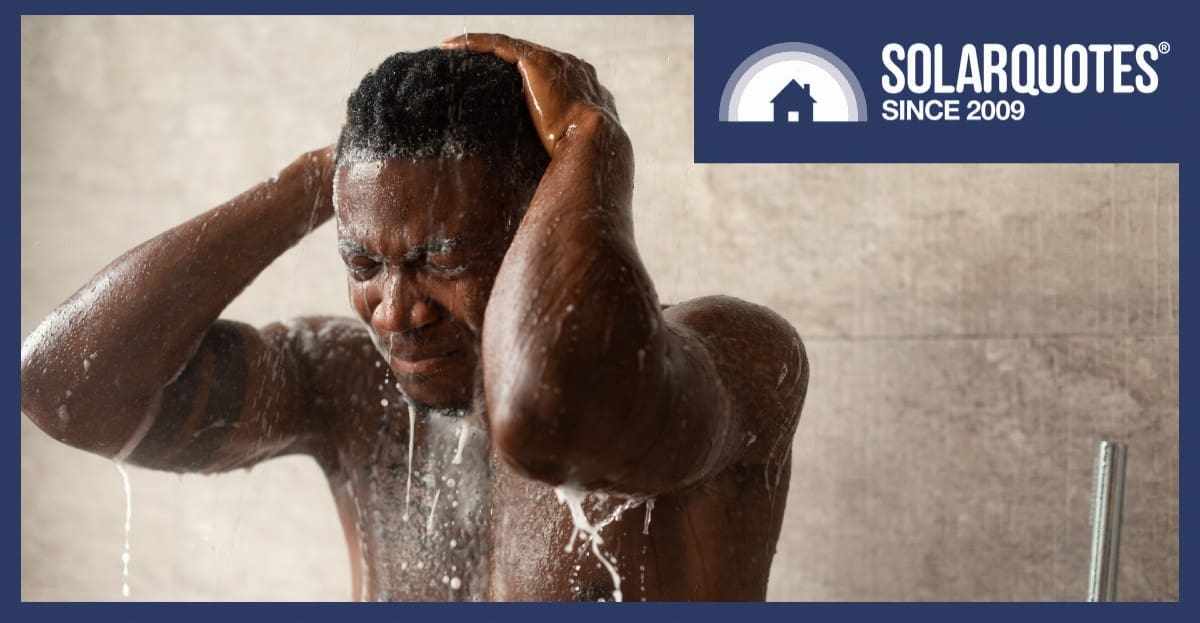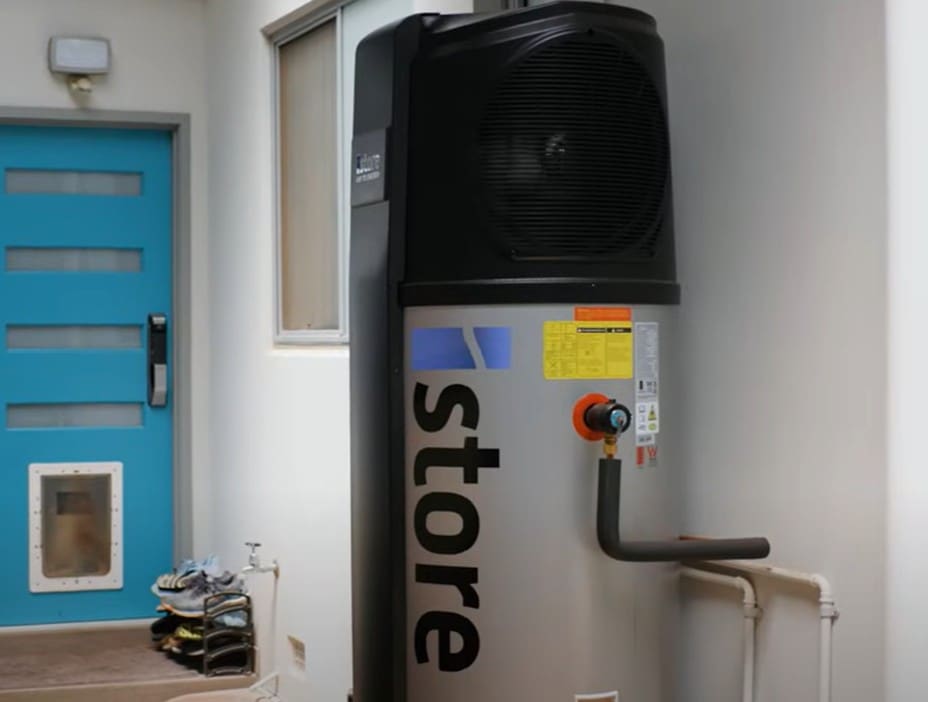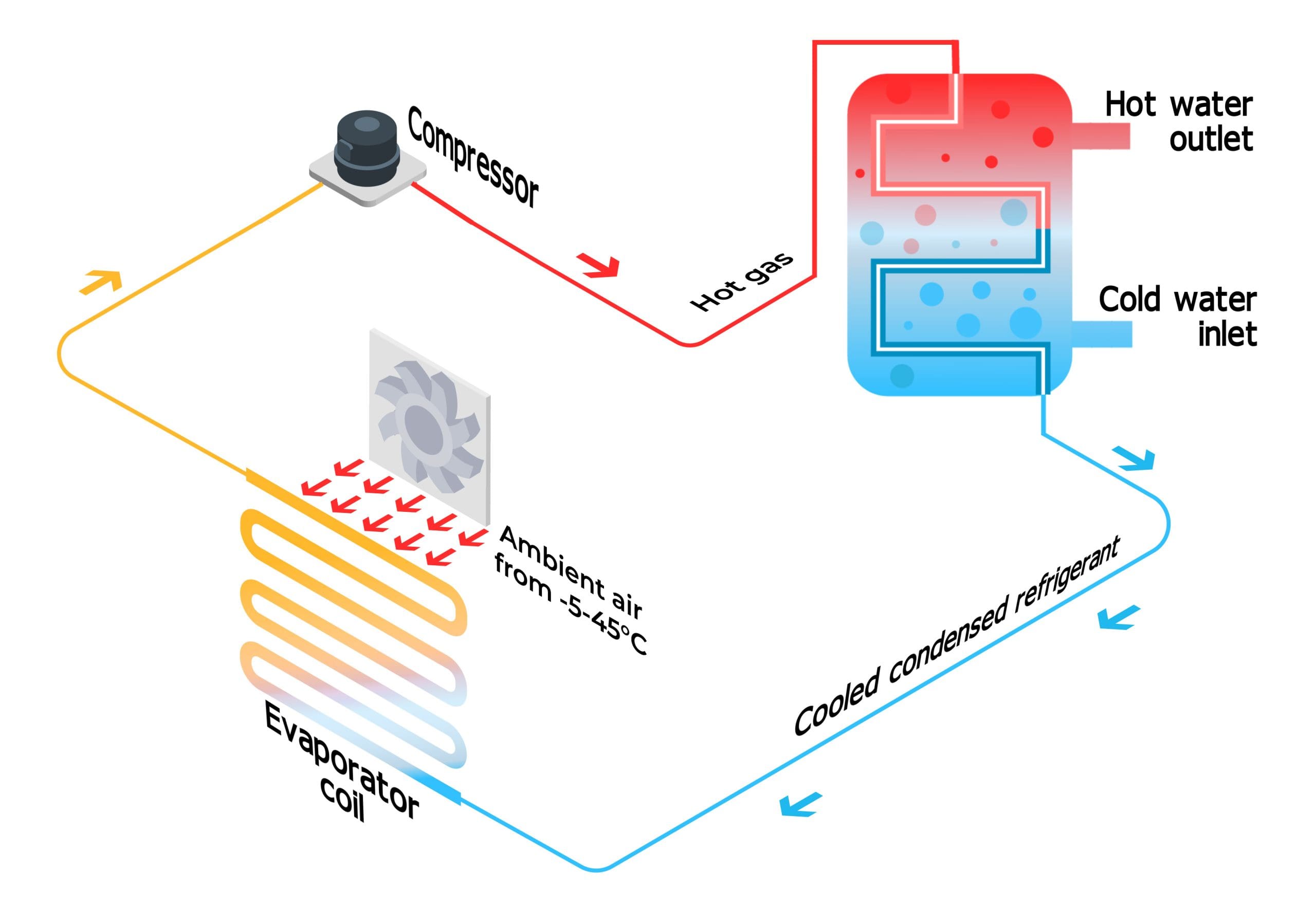 When it comes to heat pump hot water units, one of the most important decisions you’ll make is choosing a tank big enough for your needs. As I’ve heard one commentator put it, “no one likes being left cold, wet and naked.”
When it comes to heat pump hot water units, one of the most important decisions you’ll make is choosing a tank big enough for your needs. As I’ve heard one commentator put it, “no one likes being left cold, wet and naked.”
Why Does Hot Water Heat Pump Tank Size Matter?
The size of your heat pump determines whether you have enough hot water for your household’s needs, how efficiently the system runs and the upfront cost.
Heat Pumps Take Their Time
A heat pump hot water system works by absorbing warmth from the air and transferring it into your water. The process is highly efficient and is the main reason we love heat pumps – they are incredibly cheap to run. But the process is slower than traditional electric or gas hot water systems, so it’s important to store enough hot water to cover your needs.
If you undersize your tank, you run the risk of running out of hot water before the end of the day. Oversize it, and while you’ll pay more upfront, you’ll have the peace of mind that there’s always enough supply, even when guests come to stay or your household grows. The key is understanding how your household uses hot water.
How Long Are Your Showers?
The single most important factor in determining the size of your heat pump is how your household uses hot water – particularly how much you use each day. And generally that comes back to the length of your showers.
For example, I have a 225-litre heat pump that serves my family of four (me, my wife and two kids). We often have grandmas staying to look after my younger daughter, so sometimes we have five in the household.
On the other hand, in my work at Powrhouse, our team has installed 270-litre units for two-person homes. One customer in particular made it very clear to me that she and her partner would once a month have 20 minute plus showers each and they had zero tolerance for running out of hot water.
Teenagers deserve special mention here: I’ve had plenty of customers note their teens love a long shower, so bear that in mind when calculating current or future needs.
So above all else, ask yourself: how long are your showers?
Other Key Considerations
There are a range of other details to factor in:
- How many people live in your home: each person typically uses about 50 litres of hot water per day.
- How many bedrooms are in your home: more bedrooms leads to potentially more residents.
- How often you host guests: regular guests will lead to increased usage
- The age of your appliances: modern appliances tend to heat the water in the appliance, old appliances tend to draw hot water.
Rules of Thumb for Tank Sizing
Applying the 50L per person per day rule of thumb:
- A couple might need a 150-200 litre tank.
- A family of four would be better off with a 250-300 litre tank.
- Larger households of five or more should look at 315-400 litre tanks.
- For most manufacturers, the 260-270 litre size is their most commonly sold unit.

An iStore hot water heat pump with 270 litres of capacity.
Why Your Old Tank Size Doesn’t Matter
Many homeowners look at their old electric or gas hot water system as a reference point when buying a new heat pump. But the reality is that it’s not a good comparison. There are two reasons.
First, traditional electric and gas units heat water much faster. Electric systems recover at around 3 litres per minute and gas systems even quicker at 4 litres per minute. Mid-market heat pumps tend to only recover at around 1 litre per minute (2 litres per minute for premium units). My family once stayed in an apartment on holidays that had a small 50 litre electric system. The water would be cold once the bath was full for the kids, but was fine for the next shower as long as it wasn’t immediately after the bath.
Secondly, it doesn’t matter when gas units reheat the water – the gas price is the same throughout the day. This is not the case with heat pumps – we want to run them during the middle of the day, both so they are run by cheap solar and because there is more heat in the air.
When and How Heat Pumps Run
I am a big advocate for setting up a heat pump to run on a timer during the middle of the day, during what I call the “Optimum Heating Window.” In most cases this will be between 10am and 4pm. This window lines up with the warmest part of the day and, importantly, with the availability of cheap renewable electricity, both in the grid and if you have solar.
By heating just once per day and storing enough hot water to last until the next cycle, you get the best efficiency and lowest running costs.
But because the unit is running on one heat cycle per day, for the other 18 hours a day it’s not running. So if you run out, you’re out until the cycle starts the next day.
Ideally we want to choose a heat pump that will be run for one cycle per day, but the settings can be changed if you find you’re running out.
Downsides of Oversizing
The main downside is higher upfront cost. A 400-litre tank will cost more to buy and install than a 250-litre tank. However, the good news is that because heat pumps are so efficient, the difference in running costs between a larger and smaller unit is minimal. Unlike old-style electric systems, where heating a half-full oversized tank could waste a lot of energy, heat pumps use far less electricity overall. While you may spend a little more upfront, you won’t be hit with significantly higher ongoing costs.
This makes oversizing a relatively low-risk option: especially if you anticipate your household growing or you simply like the comfort of having more hot water available.
Downsides of Undersizing
If we install a unit that’s too small, there are levers we can pull.
We can increase the running time so the unit runs for longer and there’s a chance to reheat water used during the day. We can also run a boost cycle in the morning to heat for morning showers.
In some cases we can also change the settings to use a backup element to heat the water to a higher target temperature, but we’d only recommend that as a last resort or if the owners have excess solar during these periods.
But it’s clear the risks of undersizing are greater than the risks of oversizing – no one likes their shower to be cut short!

A diagram illustrating how a heat pump hot water system works.
Manufacturer Nuances
The last factor to take into account is the nuances of different sized units from different manufacturers. Let’s run through a few examples:
- Reclaim – by far the most common size for Reclaims is their 315 litre tanks. They also sell 160, 250 and 400-litre tanks, but the difference in tank price is generally only around $100-$300. This isn’t a huge difference, especially when we consider the total system price varies between $5,000 and $7,500.
- iStore – heat pumps come in 180 and 270-litre sizes. But while the tank size price difference is around $300, government incentives can change that: for instance the fully installed price in Victoria is only $150 because the larger tank size attracts more in VEEC rebates.
- Aquatech – currently come in 225 and 270 litre sizes, with a $400 price difference. On an installation price of say $1,500 to $2,000, the $400 price difference is meaningful.
Key Takeaways
When it comes to sizing a heat pump hot water tank, the goal is to balance efficiency, upfront cost and your household’s needs. Here’s a summary of what I’ve covered here:
- Base your choice on usage, not your old tank. Heat pumps heat slower, so they need more stored hot water.
- Use the 50 litres per person rule. Adjust up if your lifestyle means heavier hot water use.
- Think ahead. Consider the number of bedrooms and possible future occupants.
- Run the system once per day. Ideally between 10am and 4pm for maximum efficiency.
- No one ever complained of having too much hot water! If in doubt, it’s probably best to go bigger.
Get The Size Right For Peace Of Mind
Choosing the right size heat pump hot water tank is all about planning for how your household lives today and how it might live tomorrow.
If you get the size right, you’ll enjoy a reliable supply of hot water every day, lower energy bills, and the peace of mind that comes with a highly efficient system. If in doubt, lean towards a slightly larger tank. It’s a small upfront investment that can save you from cold showers and give you greater flexibility for years to come.
For more on the tank size of popular brands and how long they take to refill, take a look at SolarQuotes’ heat pump brand comparison table.











